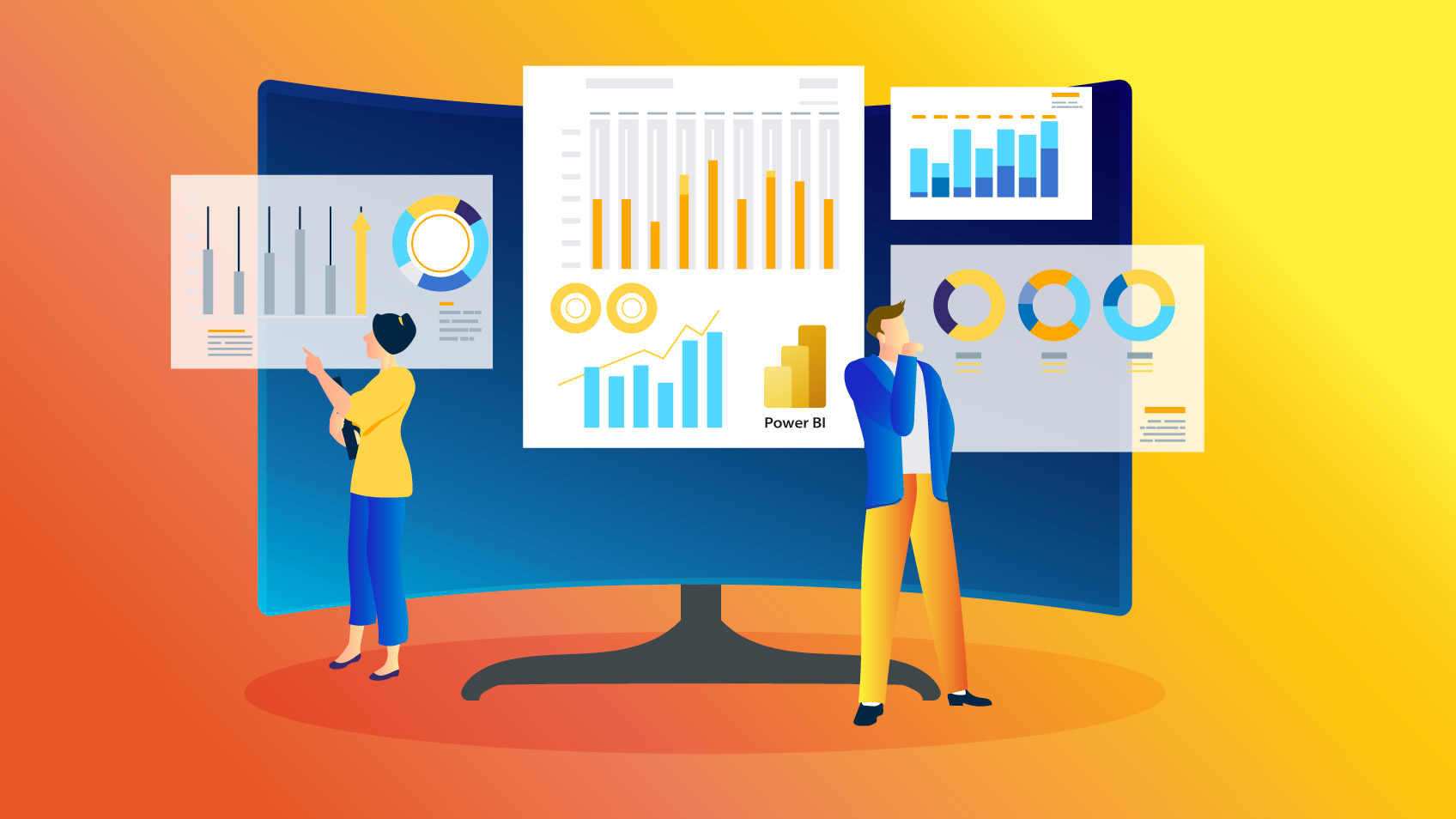Data is a resource which has become an integral aspect of business. Data can be utilized to make or break a company. Power BI, Microsoft Fabric and other tools that are powerful are employed by companies to realize the full potential of their data. These platforms are the linchpins of business intelligence, and when they are integrated with Azure Data Factory, they transform into a formidable force in data analysis and decision-making.
Power BI, Your Business Intelligence Companion
Power BI by Microsoft is a powerful business intelligence tool that lets organizations visualize and share their data. Power BI lets users create interactive reports and dashboards that transform raw data into actionable data.

Power BI can be tailored to suit your needs whether you’re a startup or a large company. Power BI seamlessly integrates multiple data sources and makes it simple to consolidate data from different platforms and databases. Even non-technical users can use it to create reports quickly and analyses using its simple drag-and drop interface.
The Power BI platform supports real-time processing of data, making sure that you’re always working with the most recent data. Power BI offers a range of visualisations that permit the presentation of data in a clear, interesting manner. It is essential to work together and share reports. This can help in improving decision-making within your company and create a more data-driven work environment.
Microsoft Fabric: Weaving Data Innovation
Microsoft Fabric is an underlying framework that connects and manages the data of various Microsoft services. The fabric is what makes data into an ad-hoc entity that can be utilized by companies.
Microsoft Fabric helps businesses maintain data integrity and consistency while they work with growing volume of data. Microsoft Fabric works with a wide range of services ranging from Azure Data Lake Storage, Azure SQL Data Warehouse, and Power BI. This connectivity allows data to move smoothly and for insight to be drawn from various sources.
The versatility of Microsoft Fabric is particularly evident in its data transformation capabilities. Make use of it to cleanse and prepare data for analysis. Additionally, you can use it to ensure that data complies to your company’s guidelines for data governance. Microsoft Fabric is an infrastructure that will ensure your data is correct and reliable for analysis.
Azure Data Factory: The Gateway to Data Transformation
Azure Data Factory is an important component of the contemporary enterprise intelligence landscape. It’s a cloud-based information integration service that lets you design, schedule and manage workflows that are data-driven. By orchestrating data movement and transformation of data, Azure Data Factory paves the way for meaningful knowledge.
One of the major benefits of Azure Data Factory is its versatility in connecting to a variety of data sources. Data can be integrated seamlessly, whether stored on your premises, in the cloud or both. This will give you an overview of your entire data ecosystem regardless of where your data is. The platform supports batch processing and real-time data streams as well as big data analytics, which makes it suited to a range of applications.
Azure Data Factory has a visual user interface which makes the process of creating data pipelines. It’s easy to design and manage the workflow of data, even if you’re not a coder. This lets users be in control of data integration as well as self-service data preparation.
Power BI with Microsoft Fabric, Azure Data Factory, and Power BI
When Power BI, Microsoft Fabric, and Azure Data Factory come together and form a powerful trio that can completely transform your data analytics initiatives. What are the ways they can work together?
1. Data Integration Azure Data Factory connects to a variety of data sources, ensuring that your data is readily accessible. Microsoft Fabric orchestrates the data from various services by using this data integration capability. It makes sure that your data is correctly organized, cleansed and ready for analysis using Power BI.
2. Data Transformation: Microsoft Fabric plays a essential part in the process of data transformation that allows you to alter the data you have to suit the needs of your analysis. Fabric makes sure that your data is prepared for analysis regardless of whether you are cleansing or transforming data.
3. Power BI is able to assist after the data has been refined and prepared. Power BI enables you to develop visually appealing reports as well as dashboards that make difficult data accessible. You can then share these insights with your team members, fostering data-driven decision-making.
4. Scalability: Azure Data Factory can scale to accommodate growing amounts of data. Combining Power BI with Microsoft Fabric will make sure that your data is reliable and consistent even when your business grows.
5. Power BI & Azure Data Factory can provide real-time information which is crucial for agile decision-making.
The end of the article is:
The field of business intelligence is changing rapidly and to stay competitive, companies must harness the power of information effectively. Power BI, Microsoft Fabric and Azure Data Factory are a powerful trio that will assist you in taking your business intelligence to new levels. This trio will enable you to produce stunning visuals, ensure accuracy of data and streamline your data-related workflows. Make your data more effective with the help of business intelligence.
